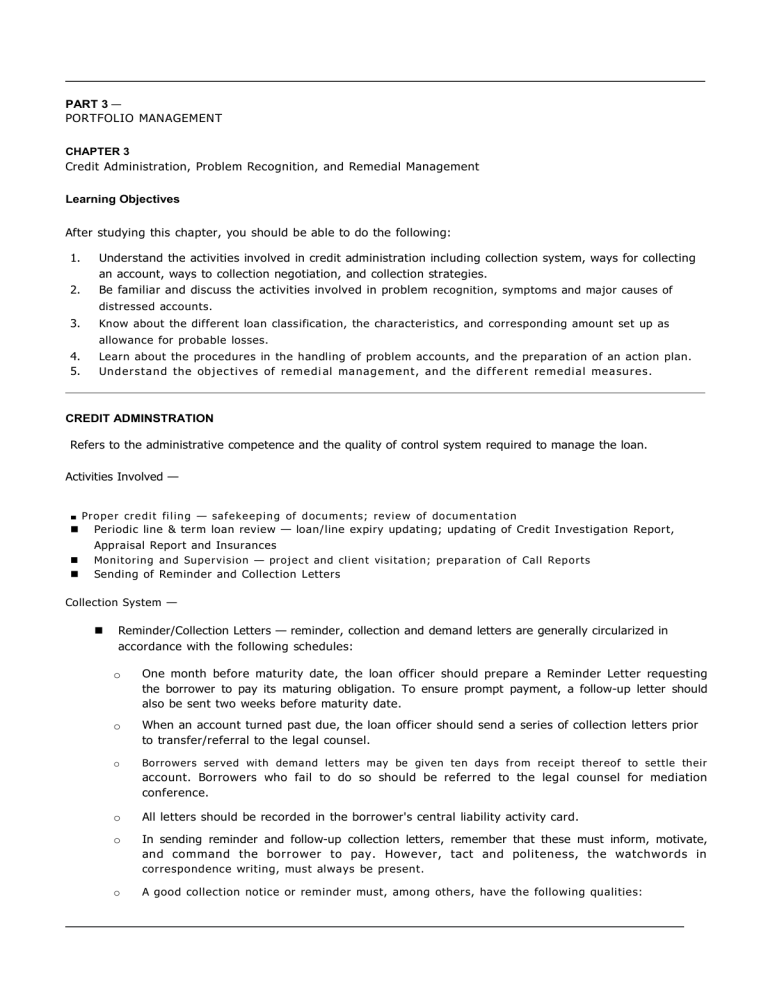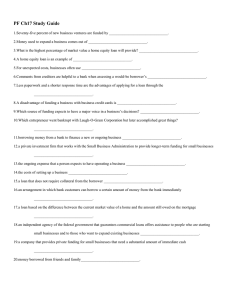
PART 3 — PORTFOLIO MANAGEMENT CHAPTER 3 Credit Administration, Problem Recognition, and Remedial Management Learning Objectives After studying this chapter, you should be able to do the following: 1. 2. Understand the activities involved in credit administration including collection system, ways for collecting an account, ways to collection negotiation, and collection strategies. Be familiar and discuss the activities involved in problem recognition, symptoms and major causes of distressed accounts. 3. Know about the different loan classification, the characteristics, and corresponding amount set up as allowance for probable losses. 4. 5. Learn about the procedures in the handling of problem accounts, and the preparation of an action plan. Un d e r s t a n d th e ob j ec t iv e s of re m e di al ma n ag e m e n t , an d th e di f f e r e n t re m e di a l me a s u r e s . CREDIT ADMINSTRATION Refers to the administrative competence and the quality of control system required to manage the loan. Activities Involved — ■ Pr o p e r cr e d i t fi l in g — sa f e k e e p in g of d oc u m e n t s ; re vi e w of do c um e nt a ti o n Periodic line & term loan review — loan/line expiry updating; updating of Credit Investigation Report, Appraisal Report and Insurances Monitoring and Supe r vision — proj e c t and client visita tion; pr ep a ra tion of Call Rep orts Sending of Reminder and Collection Letters Collection System — Reminder/Collection Letters — reminder, collection and demand letters are generally circularized in accordance with the following schedules: o One month before maturity date, the loan officer should prepare a Reminder Letter requesting the borrower to pay its maturing obligation. To ensure prompt payment, a follow-up letter should also be sent two weeks before maturity date. o When an account turned past due, the loan officer should send a series of collection letters prior to transfer/referral to the legal counsel. o Borrowers served with demand letters may be given ten days from receipt thereof to settle their o All letters should be recorded in the borrower's central liability activity card. o In sending reminder and follow-up collection letters, remember that these must inform, motivate, and command the borrower to pay. However, tact and politeness, the watchwords in account. Borrowers who fail to do so should be referred to the legal counsel for mediation conference. correspondence writing, must always be present. o A good collection notice or reminder must, among others, have the following qualities:

